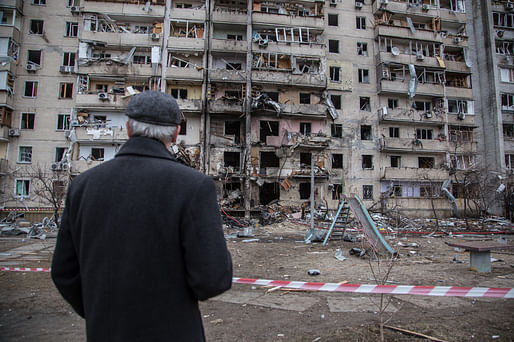

Over one month since Russia launched a full-scale invasion of Ukraine, the impacts of the war on Europe’s construction sector are beginning to emerge. Since the military offensive began, a steady increase in European sanctions against Russia has curtailed material supplies across the continent, while the uncertainty surrounding the supply of Russian oil and gas to Europe is expected to cause significant cost increases for manufacturing and supplying construction products.
Although the conflict has been ongoing for over a month, industry groups from Europe and the UK predict that the worst is yet to come for the AEC sector. The progressive nature of sanctions, the prior availability of products already in stockpiles or supply chains before the conflict began, and the tendency for manufacturers to agree on energy prices well in advance of supply, have all created a lag between events in Ukraine and their impact on construction sites.
“All projects are likely to be affected by issues triggered by the Ukraine conflict, ranging from inflation problems to issues associated with supply chain stability,” warned the UK’s Construction Leadership Council (CLC) in a briefing at the end of March. “The crisis may not be resolved quickly, and businesses should be ready for an extended period of disruption.”

The most direct impact of the war on European construction sites will be the availability of materials sourced from Russia and Ukraine. Much of Ukraine’s industrial capacity has been destroyed by the conflict, leading to a reduction in key construction materials produced in the country such as steel and timber. Ukraine is also a key supplier of clay used in ceramic tiles and sanitaryware.
European sanctions on the Russian economy have meanwhile placed doubt over the availability of key Russian exports such as copper, iron ore, and steel. Both Russia and Ukraine are also major suppliers of OSB, birch plywood, and timber pallets to Europe, as well as bonding resins used in manufactured timber.
In addition to manufacturing, the conflict is also impacting the transport of construction materials. Many countries have banned ships registered or operated from Russia from entering their waters, while delays at ports due to strict checks for sanctioned Russian cargo will further slow the movement of goods. As noted by the CLC, Ukrainian and Russian nationals account for 15% of the global shipping workforce, some of whom may leave their posts in response to conscription by Russia, or calls by Ukraine’s government to return home and aid the country’s war effort.
Doubts over the future of Russia’s supply of oil and gas to Europe will also impact construction on the continent. The cost of manufacturing energy-intense products such as steel, cement, bricks, and glass will increase, which may lead some plants to reduce their supply rate. Increased oil and gas prices will also impact the cost of shipping and transport, translating into higher construction costs on-site.
While the conflict is expected to impact projects of all sizes and sectors, the specific issues to be tackled may differ for projects currently on-site versus projects still in their design phase. For design projects, architects may experience reluctance from clients to proceed with projects until the conflict comes to an end — a pattern also seen during the COVID-19 pandemic. On a broader scale, the construction elements of national COVID recovery plans in European countries may also be postponed while the war continues.
More advanced projects, either beginning or undergoing construction, will see closer scrutiny of contract terms and prices by clients and contractors. The CLC has already observed material suppliers “only willing to hold quotes for [material] prices for 24 hours,” making it near-impossible for teams to establish the fixed-price contracts which underpin many European construction projects. The result may be shorter fixed-price periods offered by contractors in tenders, and more complex discussions between clients and contractors as to who should shoulder the cost of price increases during the construction process.
The CLC also notes the potential for “survivalist behavior” on behalf of clients and contractors in an effort to avoid heavier costs, which could result in “less obvious safety and quality compromises that are often associated with projects that are facing financial difficulties.”
“It may be in the interest of clients and main contractors in the current environment to work with suppliers to solve problems quickly so that issues do not spin out of control, advises the CLC. “Contracts have been explicitly designed to manage the impact of cost escalation risk, and any change to these arrangements in response to the Ukraine crisis will need very careful consideration. However, these cost escalations are real and in many cases are unavoidable. Relying on contractual protections may not be without consequence for clients or contractors.”
No Comments
Block this user
Are you sure you want to block this user and hide all related comments throughout the site?
Archinect
This is your first comment on Archinect. Your comment will be visible once approved.